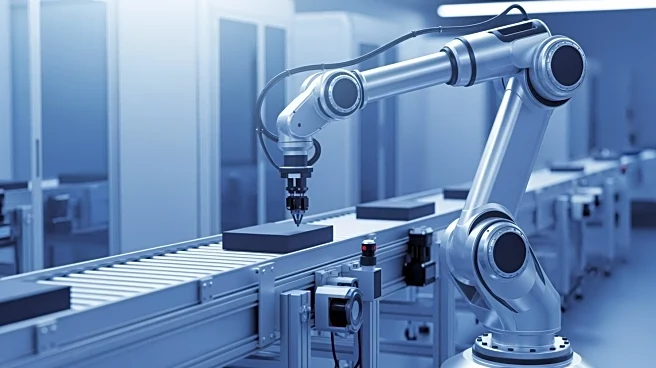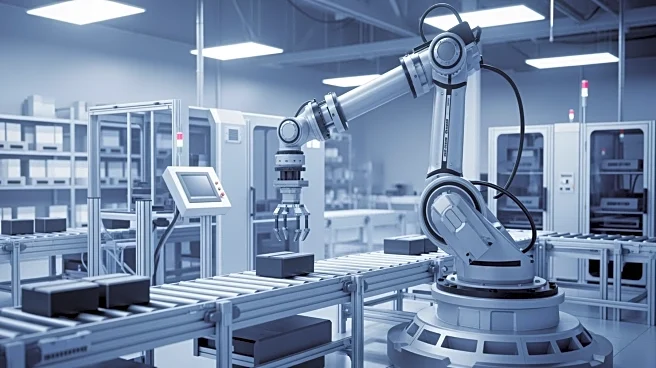What's Happening?
Amazon is reportedly planning to significantly increase its use of robotics and automation in its operations, which could lead to a substantial reduction in hiring. According to internal documents cited by The New York Times, Amazon aims to automate three-quarters
of its operations, potentially eliminating the need for hundreds of thousands of new hires. The company anticipates that by 2027, it could avoid hiring 160,000 workers in the U.S., and by 2033, this number could rise to over 600,000. This shift is part of Amazon's strategy to enhance efficiency in its logistics network, with a specific example being a suburban Atlanta distribution center where a robotics overhaul is expected to increase shipment processing by 10% with 1,200 fewer workers. Amazon is aware of the potential community impact and is considering using terms like 'advanced technology' instead of 'automation' to describe these changes.
Why It's Important?
The move towards increased automation at Amazon could have significant implications for the U.S. labor market, particularly in the logistics and warehousing sectors. While automation can lead to increased efficiency and cost savings for companies, it also poses a threat to job security for many workers. If Amazon's strategy is successful, it could set a precedent for other major companies like Walmart and UPS to follow suit, potentially leading to widespread job displacement. However, Amazon argues that automation could also create new, more technical roles within the company, although these may require different skill sets than traditional warehouse jobs. The broader adoption of such technologies could reshape the employment landscape, necessitating new training and education programs to prepare workers for the jobs of the future.
What's Next?
As Amazon continues to develop and implement its automation strategy, it will be crucial to monitor the impact on its workforce and the communities where it operates. The company may face scrutiny from labor groups and policymakers concerned about job losses and the need for worker retraining. Additionally, Amazon's approach to communicating these changes, such as using alternative terminology, will be important in managing public perception. Other companies in the logistics and retail sectors will likely observe Amazon's progress closely, potentially leading to similar strategies being adopted across the industry.
Beyond the Headlines
The ethical implications of Amazon's automation strategy are significant, as it raises questions about the balance between technological advancement and social responsibility. The potential for job displacement highlights the need for a broader societal discussion on how to support workers affected by automation. This includes considerations for social safety nets, retraining programs, and policies that encourage responsible innovation. The shift towards automation also underscores the importance of developing a workforce that is adaptable and equipped with the skills needed for a rapidly changing job market.













